Monster Hunter is a video game series produced by Capcom where the aim of the game is pretty self-explanatory. You go out and hunt monsters. The basic gameplay loop has your character (a hunter) prepare materials (such as armor and weapons), select a mission, find the monster, hunt it down (through killing or capturing), be rewarded with materials from the monster, and then use those materials to craft even better equipment to challenge harder monsters. Though the explanation is pretty bare, the main highlight of the games are the hunts themselves.
There are several factors that make Monster Hunter fun, in that it encourages learning monster attack patterns, careful, strategic play, and having a visual indicator of progress as your hunter’s equipment improves. Unlike other role play games, there is no traditional system of levels. Though there are Hunter Ranks, all they are for is allow you to register for tougher hunts and even more difficult monsters. That means that your hunter at the end stages of the games are still the same as your hunter from the beginning in terms of “stats”. Ultimately, the strength of your hunter is dependent more on the skill of the player rather than equipment.
Monster Hunter has long remained entrenched in Japan as a series. In the past, Capcom has tried to make the series more popular in the West. Efforts however have proven lackluster, with no television advertisements, lack of promotion, and inconsistent releases of titles. Monster Hunter Portable 3rd for example is a Japan exclusive release in the series. The most token effort in the past to ‘promote’ Monster Hunter overseas was a series of skits that parodied advertisements. Those skits never appeared on television, being confined to Monster Hunter’s official YouTube page in promoting Monster Hunter Tri on the Nintendo Wii.
Only the most recent release however, through implementing many Western elements, brought Monster Hunter from a primarily Asian game into a series that is now being recognized outside of Japan. As a cross current, this inquiry explores how Monster Hunter turned from a niche series in the West and transitioned into Western mainstream.
Monster Hunter as a game is best enjoyed with company.
Though there is enjoyment to be had in watching players take down difficult hunts solo (and even competitions to see who can complete a hunt the fastest), the multiplayer aspect is what drives the series’ success. The games are a social experience and their recent releases reflect that trend. Though the first game released on the PlayStation 2, subsequent releases were released on handheld gaming devices such as the PlayStation Portable and the Nintendo DS. This encouraged local play, as wi-fi capabilities did not appear until later installments.
In Japan, Monster Hunter is ridiculously popular, with many references in anime and manga.
There is even a small reference to Monster Hunter in Scott Pilgrim, a Canadian graphic novel series.
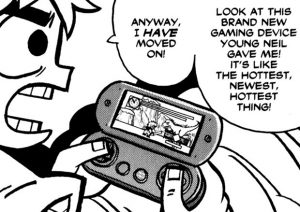
Universal Studios Japan even hosts events themed around Monster Hunter in celebration of a new installment in the series.
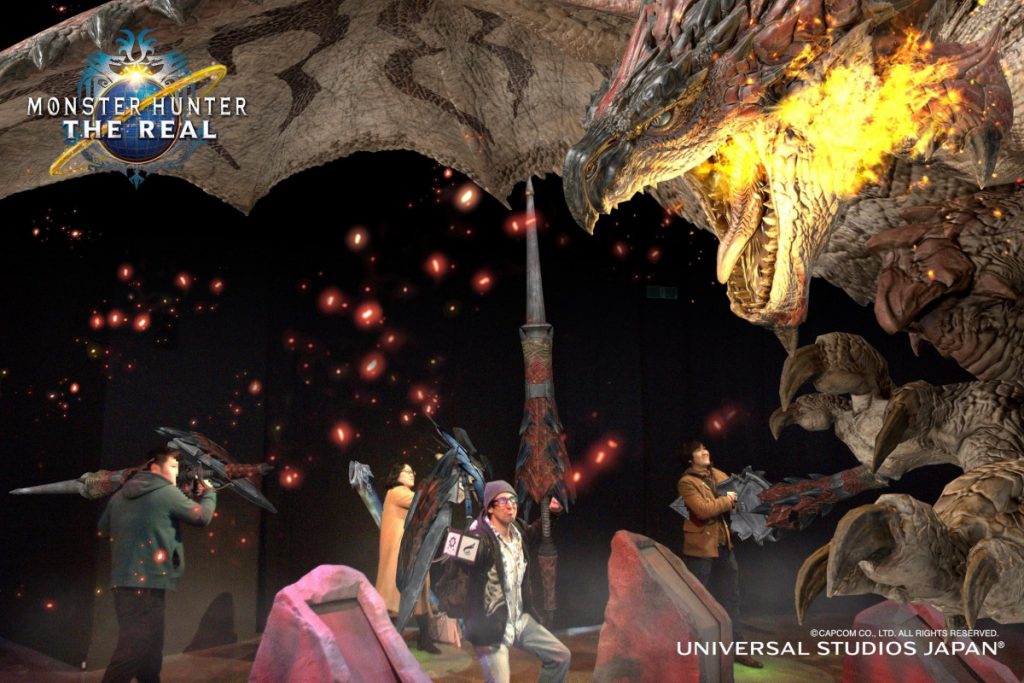

In addition, Monster Hunter has crossovers with other popular franchises such as Mario, The Legend of Zelda, Metroid, Megaman, and even Metal Gear Solid.
The multiplayer aspect of Monster Hunter encourages social interaction. It’s not uncommon to see people on the transit systems in Japan playing Monster Hunter on their gaming devices whether it be the Nintendo DS, the Switch, or even the PSP for those who still enjoy playing the older games. The release of a new Monster Hunter game is always crowded, with lines wrapping around the block.
Overseas however, the series had not reached the same level of popularity as in Japan. Lack of advertisements, Japan only releases, and a different gaming culture turned Monster Hunter into a game that was heard of, but never really discussed. Ryozo Tsujimoto, the producer of the series, mentions the reason as having “always seen the West and Japan as fundamentally different, especially when it comes to factors like population density. With people commuting on trains in Japan, it was a lot easier to find people to form a hunting party with to take down a big monster” (Wright). Home consoles such as the Xbox and PlayStation are much more popular overseas, which is why with Monster Hunter being primarily on handheld consoles, the series was always niche in the West.
Monster Hunter, as a game series created in Japan, definitely pulls inspiration from Japanese culture whether it be historical, mythological, and even modern pop culture.
- Yukumo Village armor
- Yamato (male), Hinata (female) armor
- Toka Armor
One prominent example of inspiration is a monster called the Mizutsune (Tamamitsune in Japan).
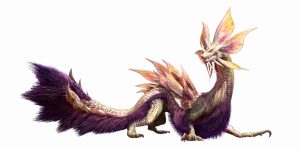
Mizutsune is special in that its’ name is a reference to Japanese mythology. The name mizutsune can be broken down into mizu (Japanese for water) and tsune which is taken from the kitsunes of Japanese folklore. Kitsune are foxes that are tricksters and spirits that have the ability to shapeshift and use them to fool people. Mizutsune’s title in Monster Hunter is the Bubble Fox wyvern, in homage to the kitsunes. The frills on its head also give it the visual appearance of a fox.
Mizutsune’s title is named after the particular way in which it retaliates against foes. They secrete a foamy fluid that causes adversaries to slip and lose their balance while the Mizutsune’s claws and scales allow it to slide around on the foam it produces. It is also capable of launching a thin beam of water at foes from a distance and utilizes the foam it produces to maneuver in unexpected positions, in reference to the tricky nature of kitsunes.
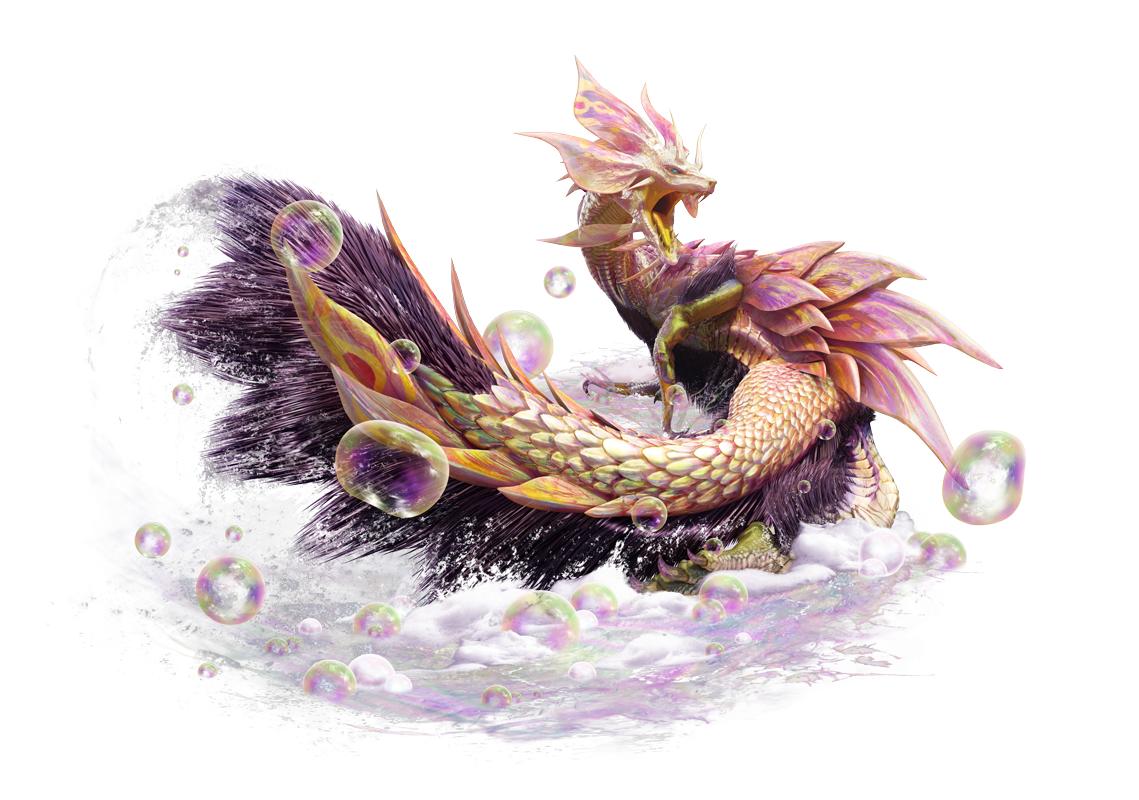
As a special note, every Mizutsune you hunt in the games are male due to the fins turning a vivid red when angered. This is a mating behavior exhibited in males of the species to attract mates. However, this leads to male mizutsunes in mating season being extremely aggressive and territorial, leading to the reason your hunter fights one in the game.
Another reason why hunting male mizutsunes in mating season is important is the armor created from the monster. There is a theme in how armor corresponds to monsters in Monster Hunter with Mizutsune’s armor being themed after marriage. There are two categories of armor in Monster Hunter with one set being for melee weapons and the other set being for ranged weapons. Mizutsune’s melee armor set matches with the marriage attire that is used in traditional Shinto ceremonies while the ranged armor set is for the guests.
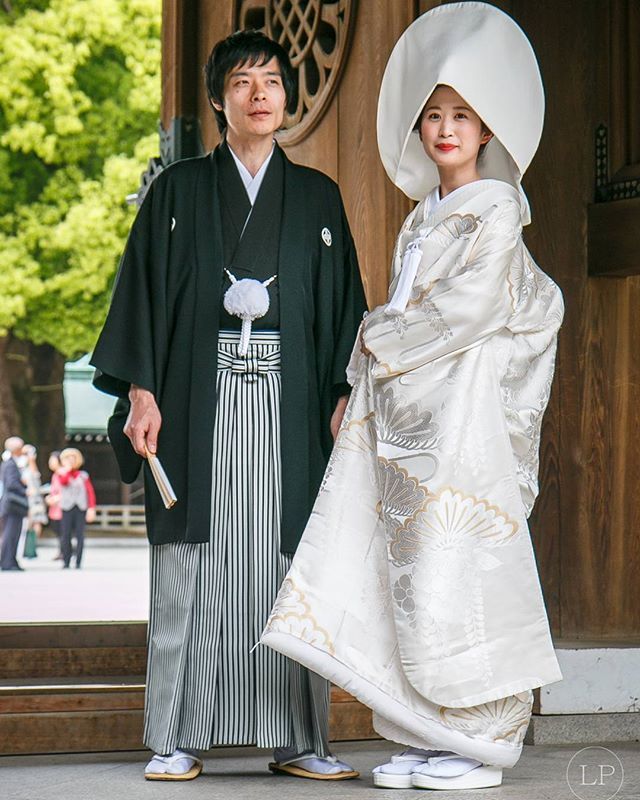
Shinto wedding attire
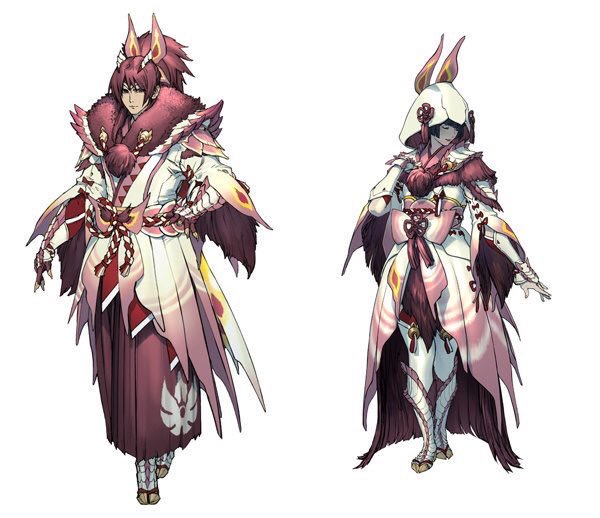
Mizutsune Melee armor
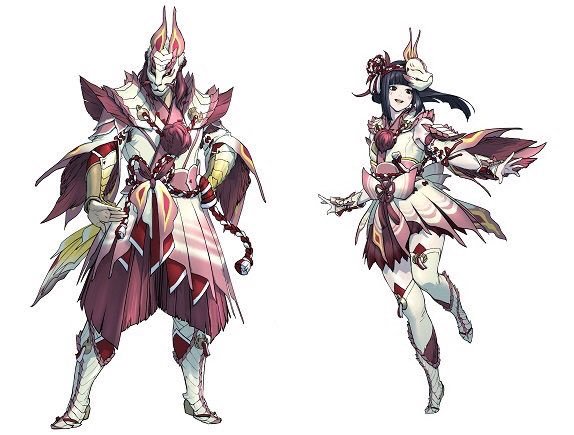
Mizutsune Ranged Armor
As a final note, the theme music that plays as you hunt a Mizutsune utilize Japanese instruments such as the bamboo flute and the shamisen.
There are some American aesthetics present in the armor sets of Monster Hunter as well. The Daimyo Hermitaur (ignoring the fact that daimyos are the title given to Japanese feudal lords), is a large hermit crab-like monster that uses its claws to huddle in on itself to defend against attacks. As a primarily defensive oriented monster, the armor set heavily resembles the aesthetics of American football players. Male versions of the armor depict football players while the female version is meant to resemble cheerleaders.
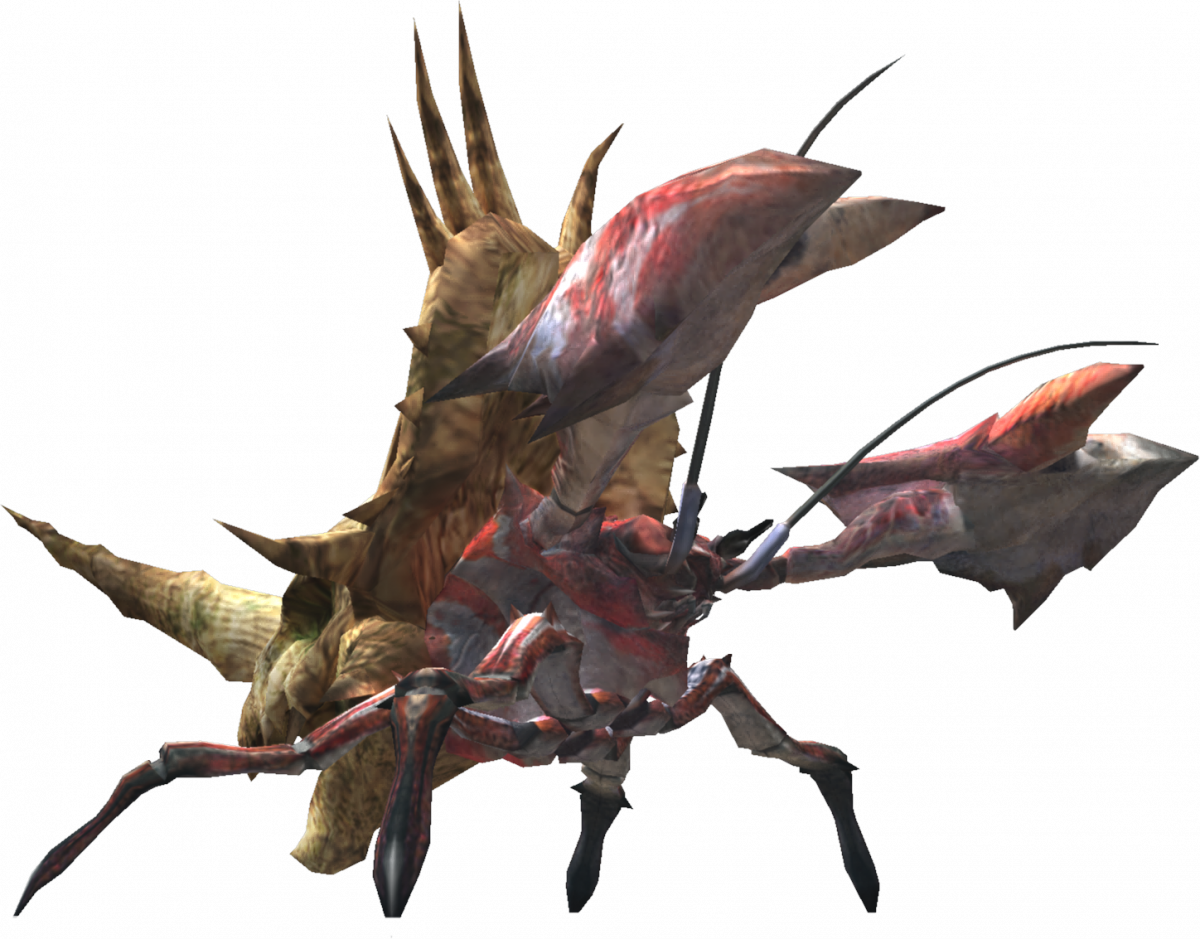
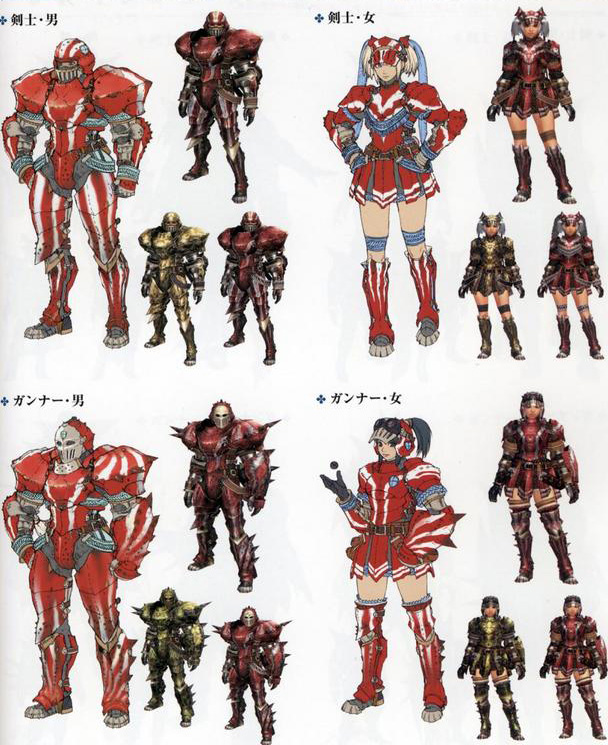
In another source of inspiration, the Nibelsnarf is a fish-like monster that disguises itself by burying itself under the sand to ambush prey. When mostly submerged, its back resembles a sand dune until one notices the breathing it does, filtering sand from its gills. Nibelsnarf is always fought in a desert, thus its armor set is fashioned after desert patterned military fatigues worn by those operating in desert climates.
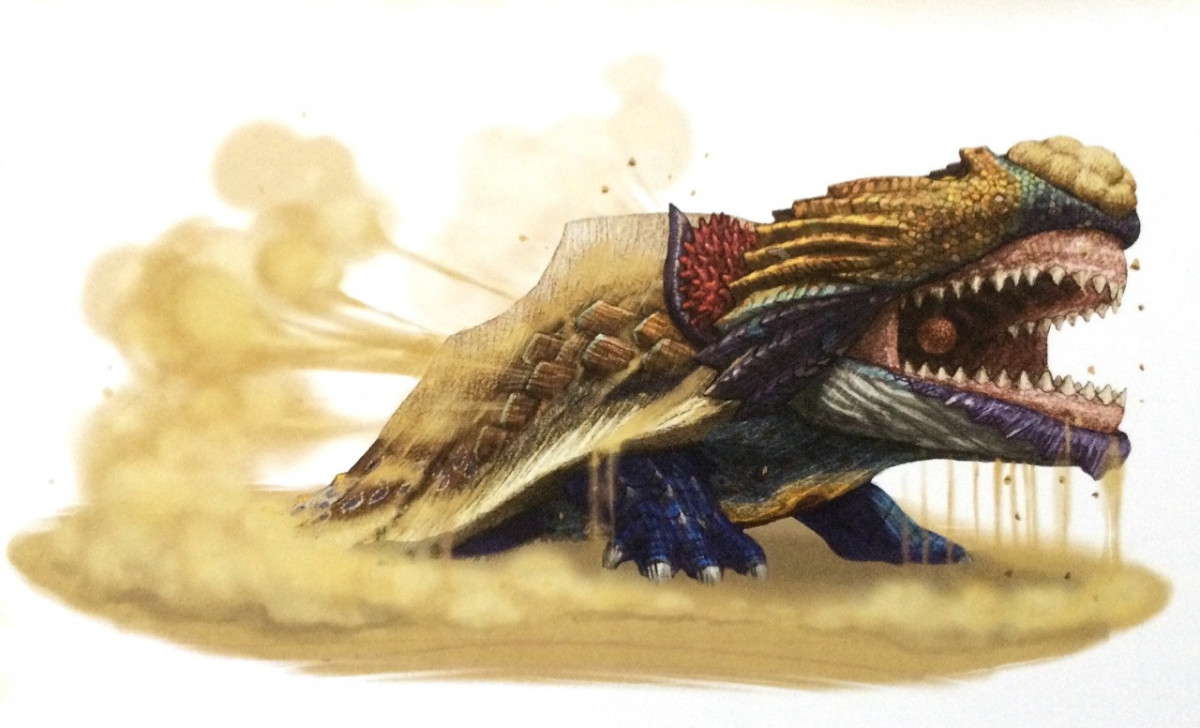
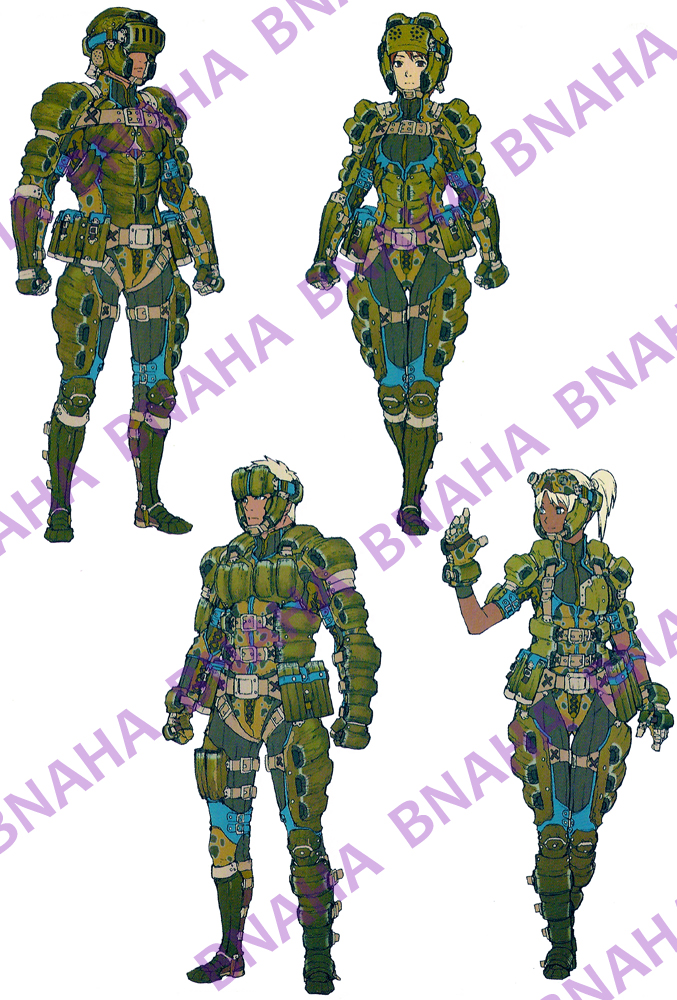
Speaking of desert climates, there is also an armor set that is popular with fans of the series which resembles the attire of cowboys in the Wild West.
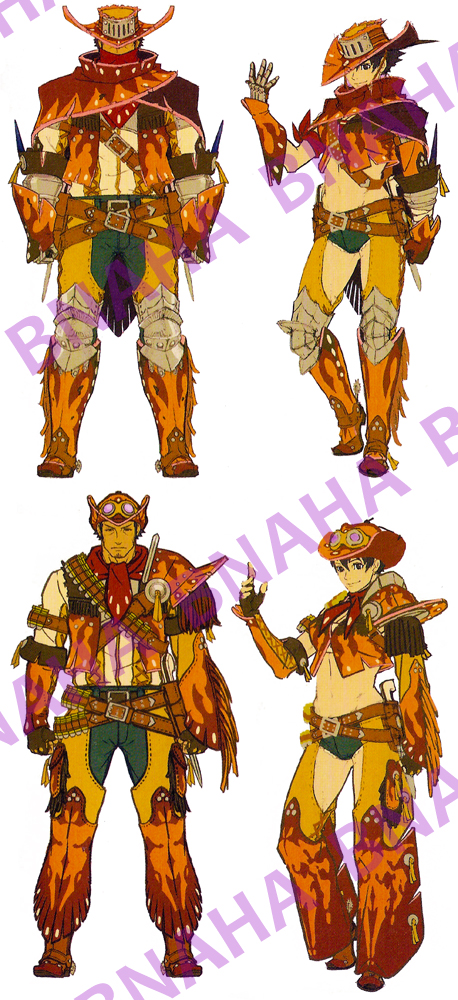
When discussing monsters, one of the most popular creatures in fantasy has always been the dragon. Dragons and their derivatives feature prominently in Monster Hunter’s roster with the wyvern label being attached to almost every monster in the franchise. In Monster Hunter, dragons pull inspiration from both Eastern and Western forms of dragons.
For Western style dragons, they were portrayed as simple beasts, obstacles to be removed. Inspired from the dragon of St. George, dragons were “almost exclusively adult and male, they lacked speech or intelligence, lacked magical abilities, and they ravaged the countryside dining on livestock and/or humans, preferably female, virginal, and, later, of high birth… commonly seen as a personification of the devil” (Cheetham).
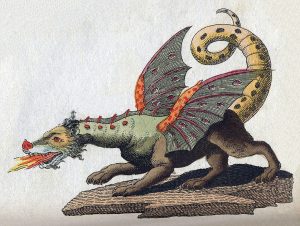
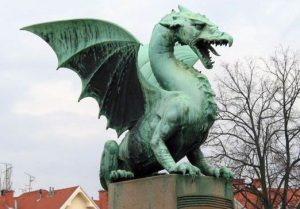
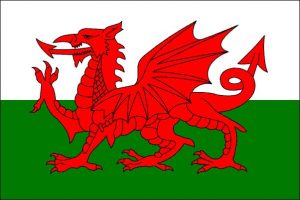
The Alatreon is an example of the western dragon in Monster Hunter, as a malevolent force of nature. Capable of commanding multiple elements such as ice, fire, lightning, and others, the Alatreon is considered an unnatural disaster.
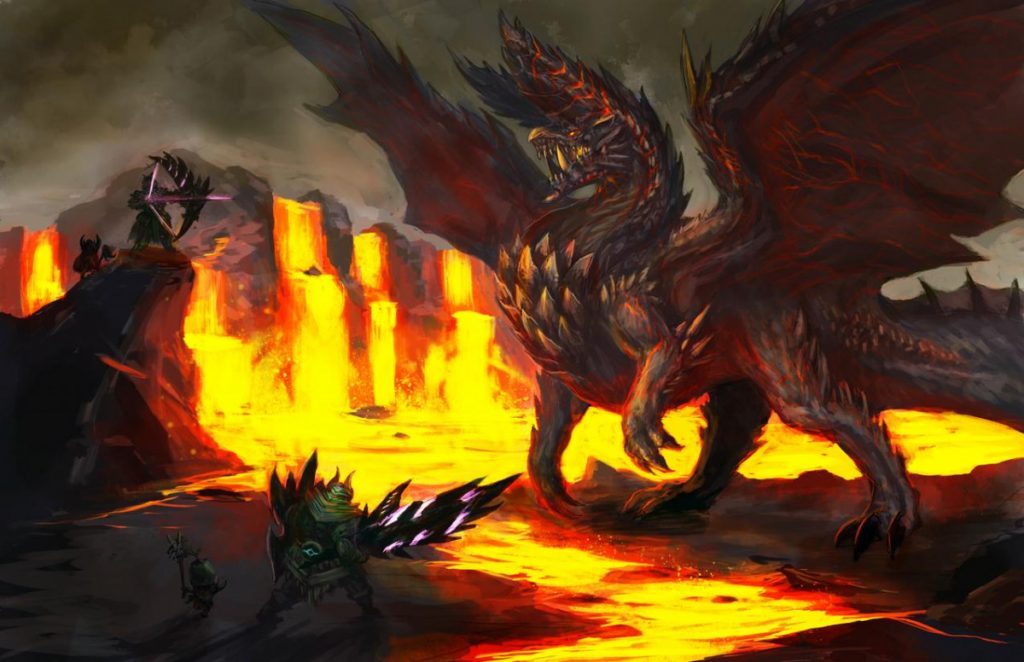
In classic western tales involving dragons, they were killed “by Christian knights as evidence of their power, their faith, or their nobility” (Cheetham). The Alatreon echoes some of that history by residing in an area called the Sacred Land.
The reason the Alatreon is hunted in game is due to the mysterious disappearances of airships around that area, leading to the eventual discovery and battle against the Alatreon itself. The theme music for the Alatreon reflects the chaotic and malevolent nature of the creature, featuring organs and electric guitar.
In contrast, Eastern dragons have a different image in their portrayal. For China and Japan, dragons were characterized by their ability “…to speak, their intelligence, their connections to royalty, possible benevolence, and their magical attributes…” (Cheetham). Dragons in Eastern mythology are revered and honored in contrast to Western dragons.
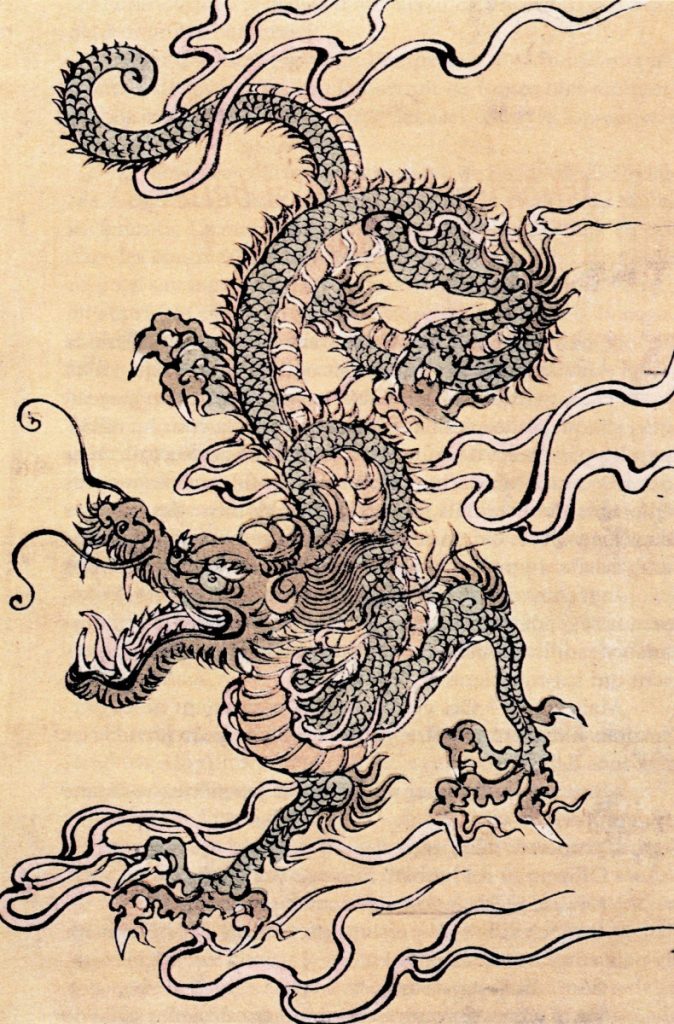
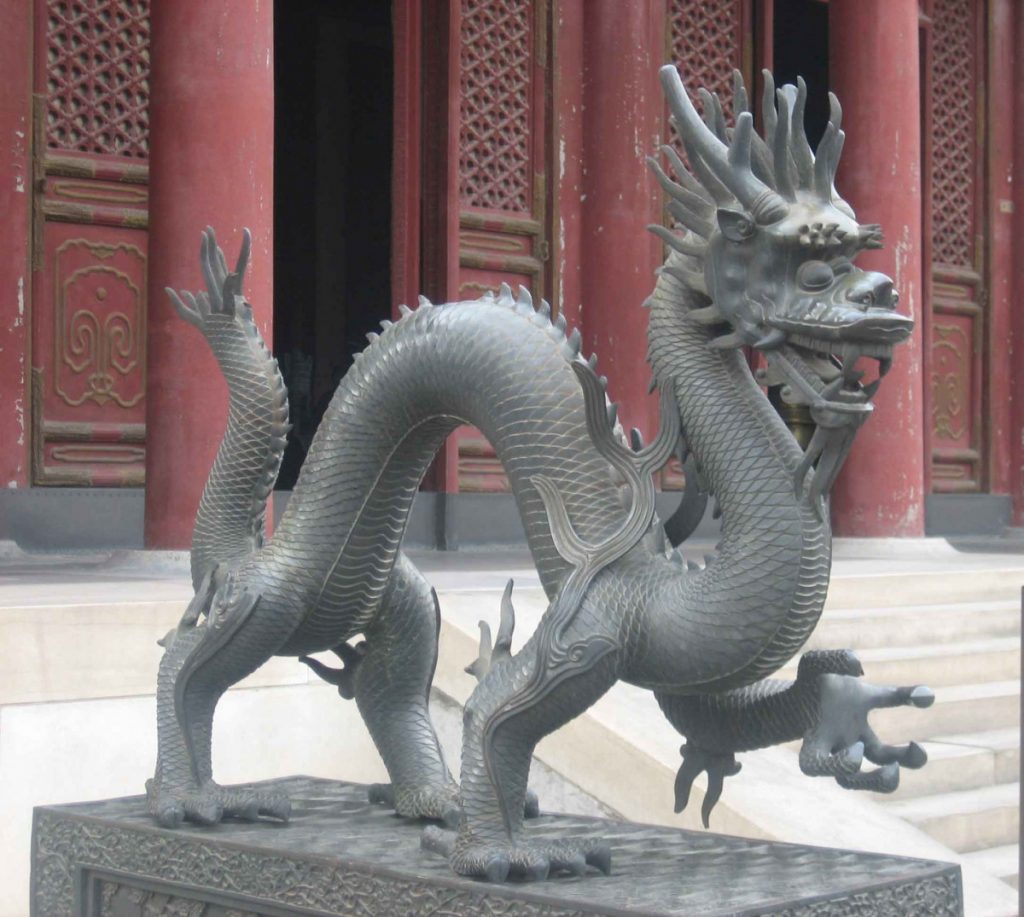
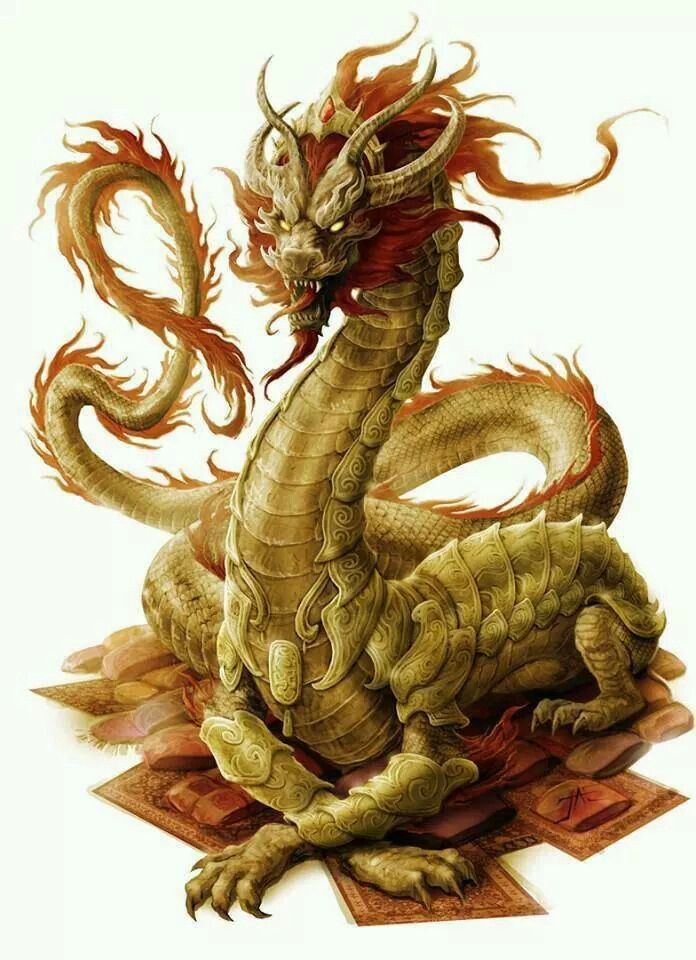
The White Fatalis, or Old Fatalis is one such example that evokes those elements. The mission in which an Old Fatalis is titled ‘Ancestral Dragon’, reflecting the venerable nature of Eastern dragons.
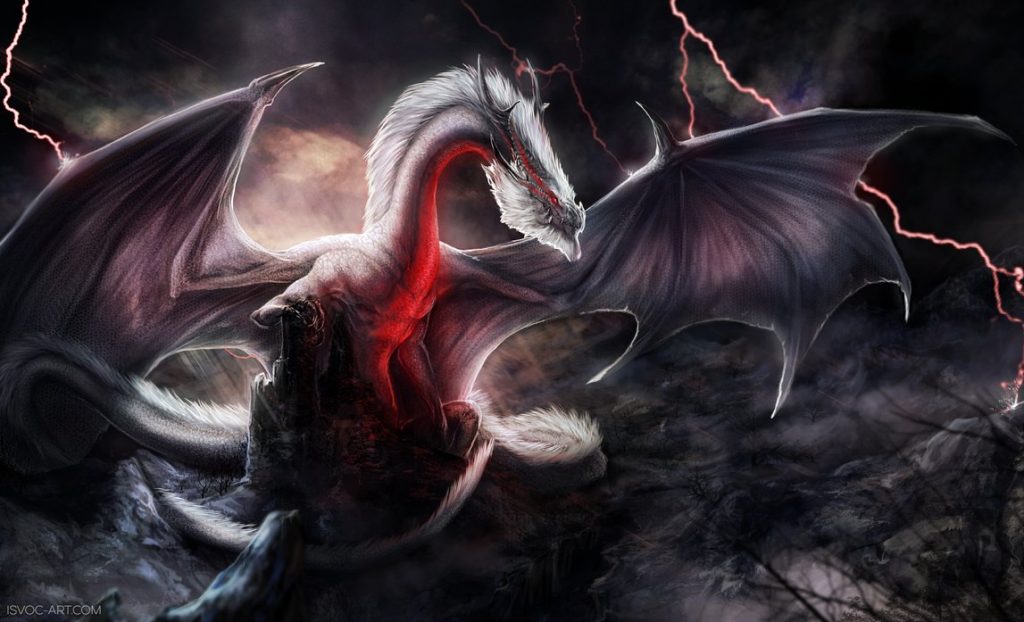
The Old Fatalis is initially fought on top of a tower that rises above the clouds, giving a nod to the ‘heavenly/divine’ attribute of Oriental dragons. The theme for White Fatalis follows in the vein of divinity through the implementation of chanting and temple bells, giving the impression of worship.
Proof of a Hero is what fans of the series consider to be the main theme of the series.
The title brings to mind the classic clash of hero against monster. The piece is triumphant in tone and plays only against the largest monsters fought in the series. Proof of a Hero emphasizes an impending victory against insurmountable odds. The usage of trumpet and other brass instruments energizes players for the last stretch of the fight. Meanwhile, the string section is a brief lull in the excitement as a means to inspire. Overall, the theme of Monster Hunter is bombastic and over the top, which fits the tones of the series.
Monster Hunter has been considered a primarily Asian game due to its large, oversized weapons, common in Asian media, the visual aesthetics being cartoonish and idealized, and emphasis on co-operative play over competitive. However, Monster Hunter along with other role play games, can trace their origins to Dungeons and Dragons, a table-top role play game (TRPG).
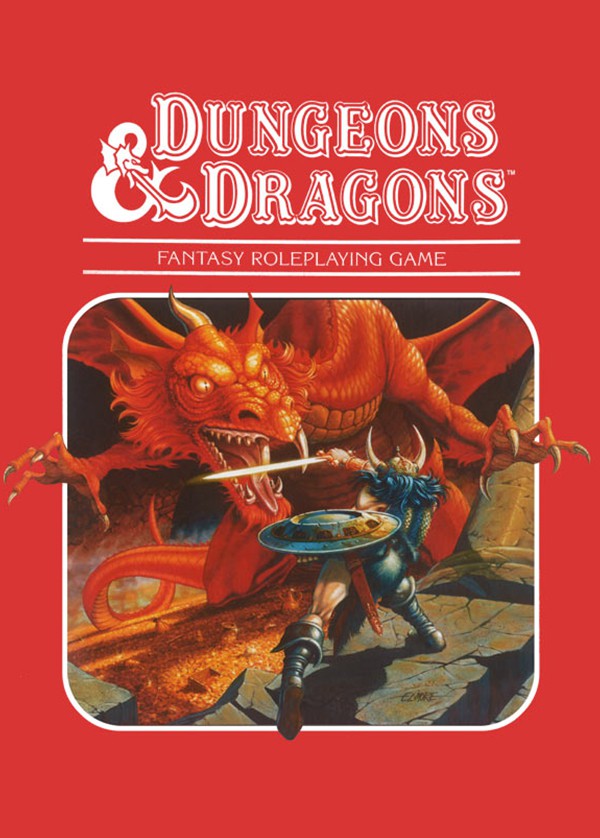
The joy of TRPGs was that “1) players, as characters in this virtual reality world, can enjoy experiences they do not encounter in everyday life; 2) players enjoy the trial and error process in cooperation with other players to solves the assignments set by the game master; and 3) the players can enjoy the interactivity that could impact the results of stories” (Wada).
TRPGs eventually developed into computer role play games (CRPG) which automated the processes involved with calculating every variable in the game such as accuracy, health points, and interactions with individuals in the imaginary setting. In Japan however, TRPGs never obtained the same level of popularity as it did in the West. As a result, many people in Japan were introduced to role play games through CRPGs.
One of the most influential CRPGs in Japan that introduced people to the genre was Dragon Quest (known overseas as Dragon Warrior).
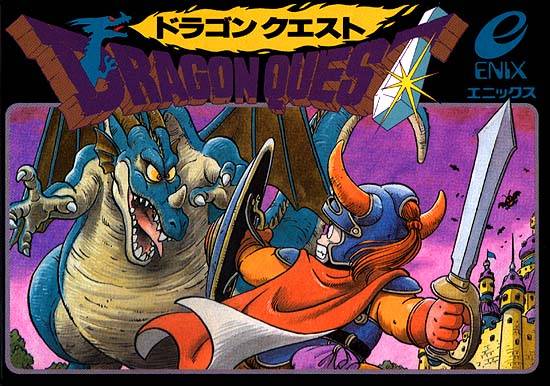
Dragon Quest (Japanese Cover)
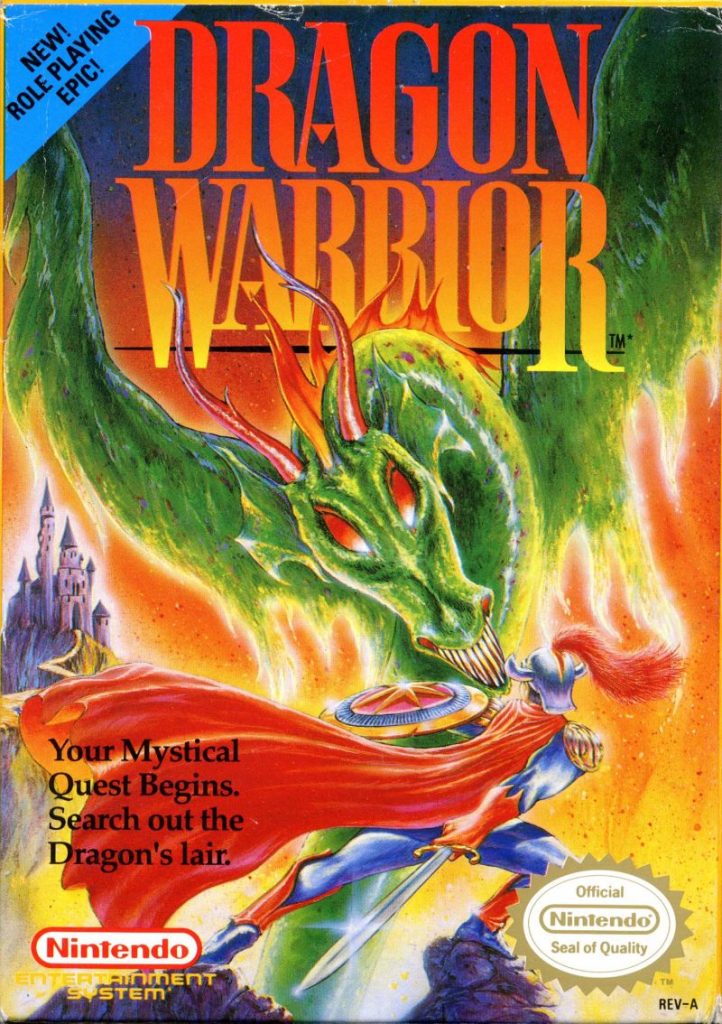
Dragon Warrior (Western Cover)
“Dragon Warrior was released for the Nintendo Entertainment System called a “family computer in Japan, and subsequently it became a widely played hit” (Wada). Though Dragon Warrior was a well-known Japanese CRPG, “Dragon warrior’s producer, Yuuji Horii, was influenced by US CRPGs such as Ultima and Wizardry” (Wada).
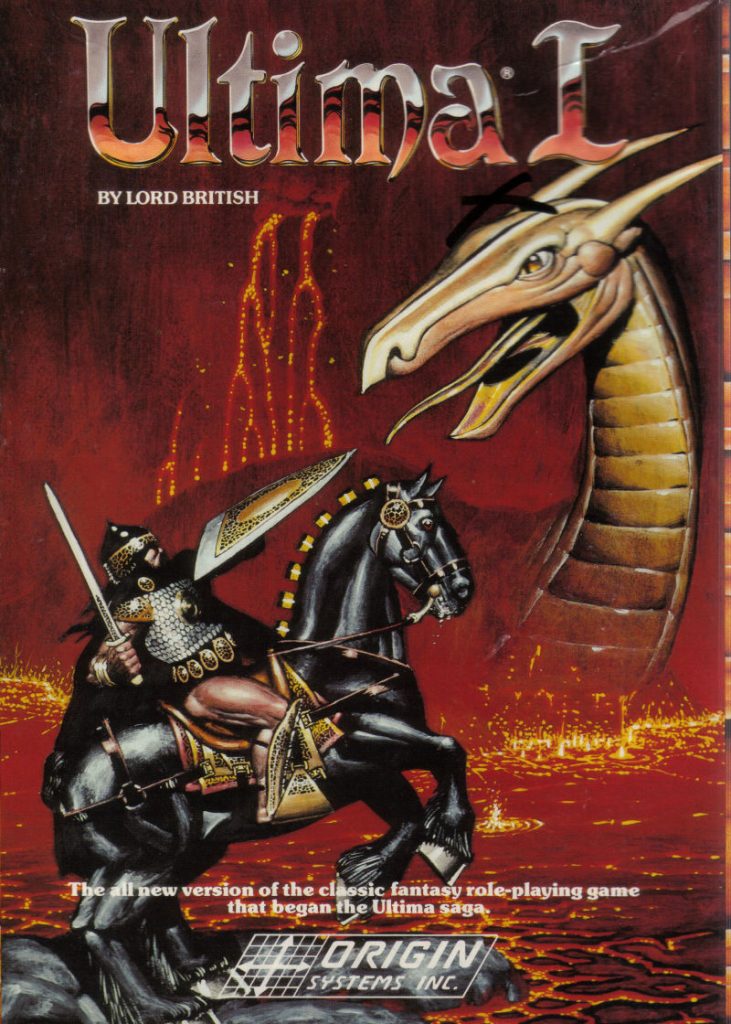
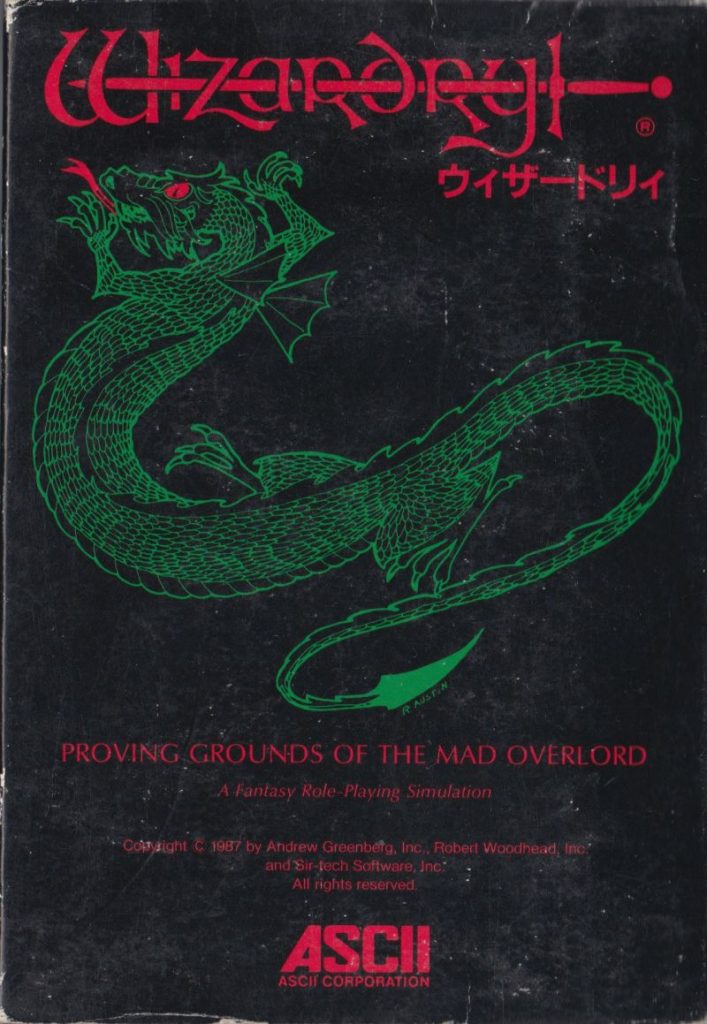
In contrast to table-top role play games, computer role play games in their earliest iterations lacked the same level of open storylines, leaving players to go through predetermined storylines. Character development was emphasized in Dragon Warrior to flesh out the lack of an open storyline.
Eventually, CRPGs in Japan were established by the criteria of being “games with the concept of experience points and with set scenarios” (Wada). In addition, due to “Yuuji Horii’s column in Weekly Shonen Jump, Akira Toriyama, the writer for “Dragonball” in the same publication of the time, became responsible for the character design of Dragon Warrior—it became a standard for character design in Japanese CRPGs to have anime-like characteristics rather than life-like characters that are alter ego of oneself within the parallel world of the video game” (Wada).
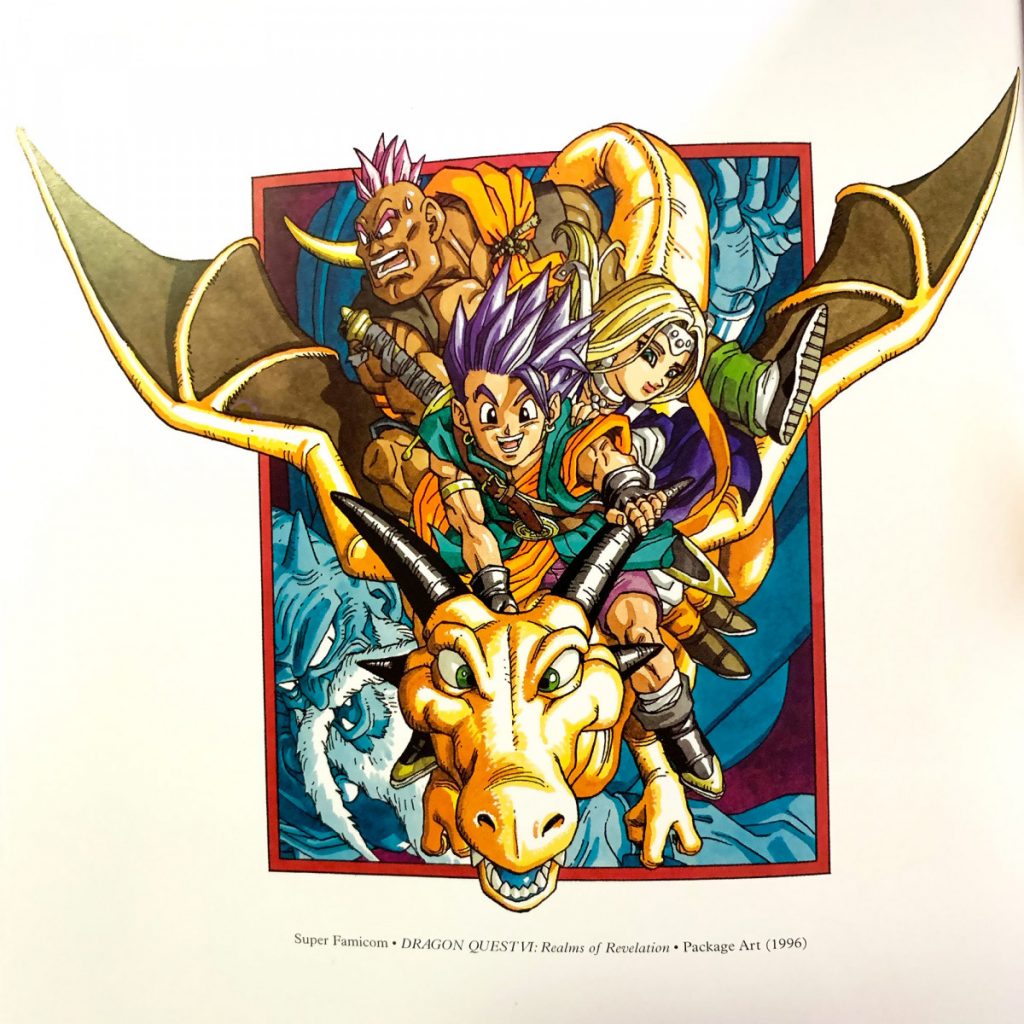
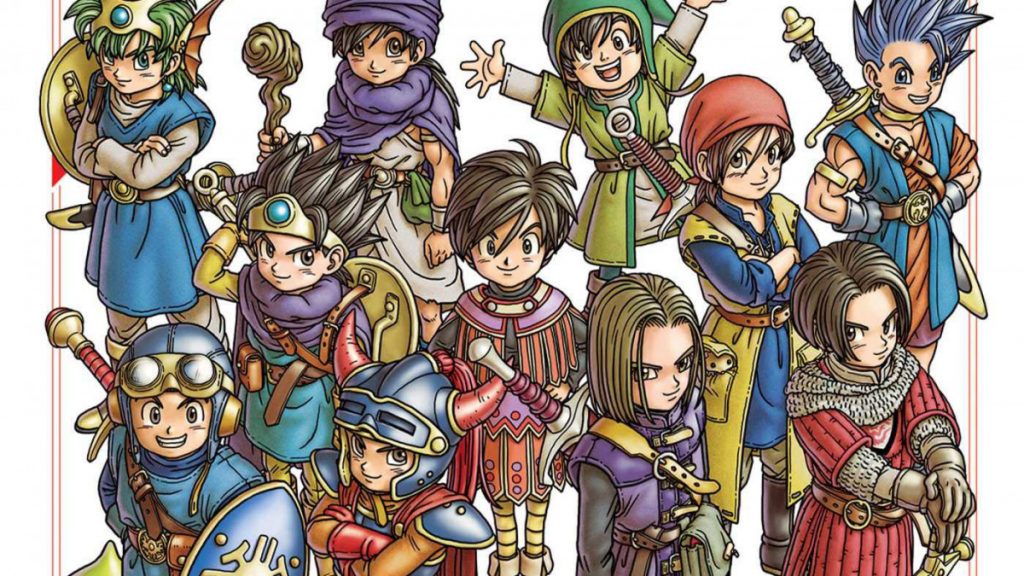
Taking together those three factors, a set storyline, character development, and anime-like character designs, the Japanese Role Play Game (JRPG) genre was established.
Monster Hunter due to its nature as an Action Role Play Game (ARPG), is influenced by Dungeons and Dragons. The game differentiates itself from a JRPG due to focus on action over storyline. Though there is a storyline present in the first Monster Hunter game, the main focus of the game has always been the hunts. Character development is little to non-existent for the player’s character and there is no set storyline besides whatever series of missions and monsters you choose to hunt. Unlike a traditional JRPG, combat is not turn based, but active, with hunter and monster able to act simultaneously. Despite these factors however, Monster Hunter never really thought to expand beyond Japan.
Then came E3 2017.
Monster Hunter World was first revealed to the public June 12, 2017 and caught many fans of the series off guard with a return to home consoles such as the PlayStation 4 and the Xbox One. They later announced a release for PC systems as well, six months after the console versions. Many things were made apparent with how different Monster Hunter World was in comparison to previous entries in the series.
The first was the graphics, the aesthetics utilizing the powerful hardware of the newest generation of consoles to create expansive, dynamic, environments. Ryozo Tsujimoto when asked about why they brought Monster Hunter to home consoles after years of being on handheld consoles such as the PlayStation Portable and the Nintendo DS replied “…it will allow us to express a much more dynamic, living world than we’ve ever been able to before. So when we had that concept in place, it seemed to make sense at this time to take advantage of home console hardware and bring Monster Hunter back to consoles. It’s going to let us have a lot more dynamism and monster behavior, more realistic AI, and complex interactions between monsters” (Knezevic).
The realistic aesthetic in particular appeals to the Western game market with games such as Assassin’s Creed Origins, Horizon: Zero Dawn, and The Last of Us. It is a departure from the stylized, anime like aesthetic of the previous games. Colors are muted slightly; environments contain more detailed textures rather than being smooth, flat planes. The Monster Hunter Team went with hybridity to help breakthrough to the Western market.
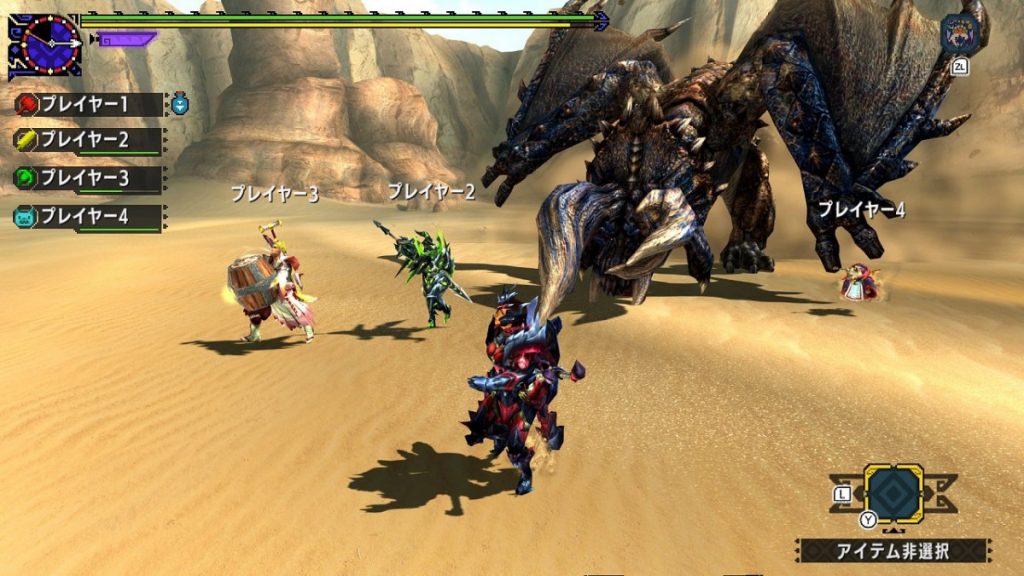
Monster Hunter Generations Ultimate’s Graphics
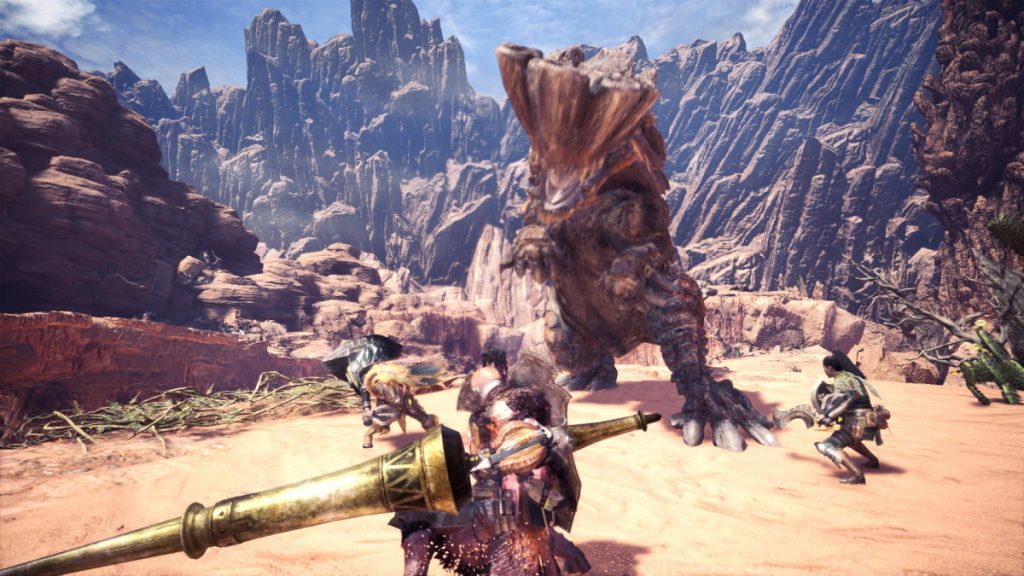
Monster Hunter World’s Graphics
Continuing with environment, the level design of Monster Hunter World was altered from the previous versions of the series. Open world role play games such as The Witcher, The Elder Scrolls: Skyrim, and the Far Cry games featuring massive, seamless worlds. Previous Monster Hunter games had areas separated by loading screens and as a result, created a sense of disjointedness in transition. Making the environments seamless emphasized the world of Monster Hunter World.
A brief showcase for comparison of Monster Hunter World (top) and Horizon: Zero Dawn (bottom) both GIFs from SunhiLegend via Reddit
Behind the scenes at Capcom, Capcom Europe’s Chief Operating Officer, Stuart Turner mentioned that the Monster Hunter Team was hesitant to create Monster Hunter World stating that “It was a big risk for the Japanese developers to go and do something that might cut off their own fanbase. They were guaranteed three or four million sales in Japan. For a risk-averse Japanese company, that’s a great big gamble” (Dring).
There are similarities here to first generation immigrants, who enjoyed a sense of insular comfort with their home countries and feared being alienated from their home country. Capcom was hesitant with Monster Hunter World being on home consoles as that was a large departure from the previous games in the series being on handheld.
The EMEA (Europe, Middle East, and Africa) marketing director Antoine Molant added that “The risk was mitigated by Sony’s support, and Sony Japan in particular, who felt Monster Hunter coming to home consoles was going to sell some PS4s… and they were right” (Dring). Thus, with Sony’s backing, the Monster Hunter Team moved forward with the development of Monster Hunter World.
While Monster Hunter World was not the first attempt by Capcom to make the series more popular in the West, this is the largest concerted push. Ryozo Tsujimoto mentioned that naming the newest game Monster Hunter World was deliberate. Tsujimoto states that world was in the title “…because it speaks to the concept of the game in a variety of ways. This is the first simultaneous worldwide release for the game, and the servers are global this time” (Wright).
Monster Hunter World wanted to connect to markets overseas, facilitating this global release. Monster Hunter as a franchise ventured beyond their home country to find success in others. As an additional effort to tie in Monster Hunter World as an international release, crossover events were released that involved other games known in the West. Ubisoft’s Assassin’s Creed Origin, Horizon: Zero Dawn, Street Fighter, and The Witcher were involved in order to help promote the game. The Monster Hunter World team emphasized that they wanted to stand on the international gaming stage.
Monster Hunter World’s soundtrack in particular is something to be noted as an indicator of Asian American interaction.
The Monster Hunter Team, in creating the soundtrack for Monster Hunter World, went to Nashville with the intent of infusing a ‘Hollywood’ feel while maintaining the unique style of Monster Hunter’s themes and melodies. Composers from previous Monster Hunter titles collaborated with American composers to instill the essence of the ‘world’ in Monster Hunter World. The result can be heard in the large, sweeping dramatic orchestral pieces that are present in Monster Hunter World.
One theme in particular, evokes something quite peculiar in its tone. The Bazelguese, is known to the community as the living B-52, in reference to the Boeing B-52 Stratofortress American bomber planes. It flies over groups of enemies, scattering black scales on the ground that when struck, ignite and combust, in a likeness to bombs.
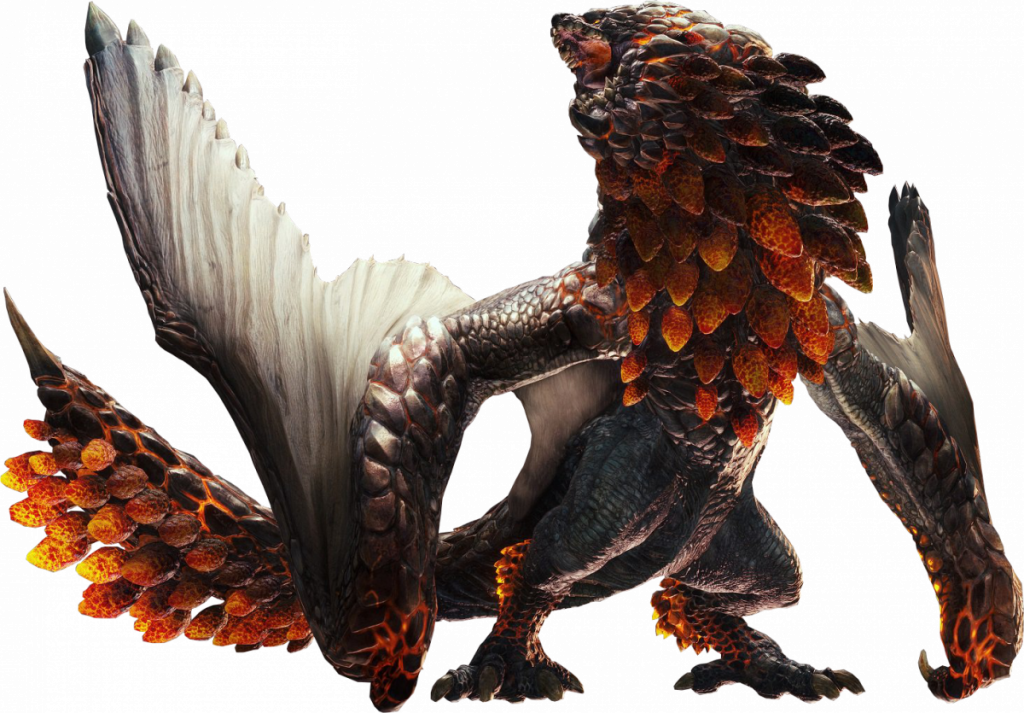
Bazelguese’s theme in particular sounds similar to an old war movie, with the initial string parts sounding like an air-raid siren. The drums beat out a cadence similar to a military march, while the brass simulate a bombing run.
One factor that plagued Monster Hunter since its inception was the lack of information given to the player. Which missions to choose to advance your rank, how to get involved with the various other mechanisms that produced certain items, monster weak spots, and even which rank of monster drops the right material for equipment. This was a large barrier of entry that intimidated prospective players from entering the franchise.
Monster Hunter World remedied this with an in-game manual that showed weak points in monsters, what elements certain monsters were weak to, and introduced damage numbers. In total, this helped newer players understand the nuances and progress through the various missions.
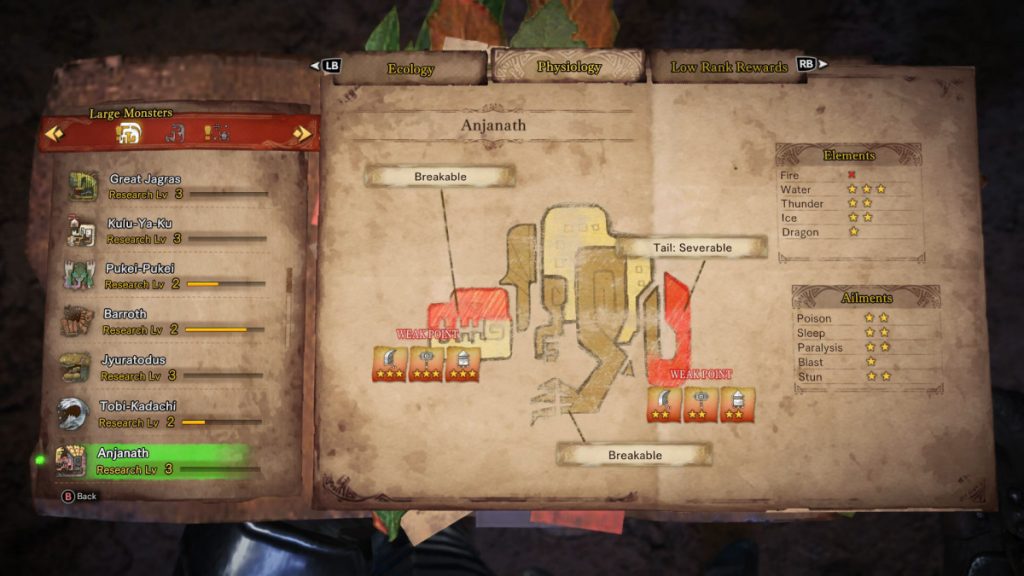
In a sense, Monster Hunter had a language barrier that kept others from interacting in a meaningful manner. Overcoming this limitation was another vital factor in making Monster Hunter World successful in the Western markets.
Monster Hunter World implemented many elements present in Western games to drive its success overseas. In hybridization, the Monster Hunter Team moved from handheld systems to home consoles, changed the aesthetic from anime like to realistic, made the environments more open world, got involved with crossovers of other known Western games, implemented both a global release and global servers, collaborated with American composers to create a Hollywood feel to the soundtrack, and provided information in order to welcome newcomers to the franchise. With those factors combined, Monster Hunter World was released globally on January 26, 2018.
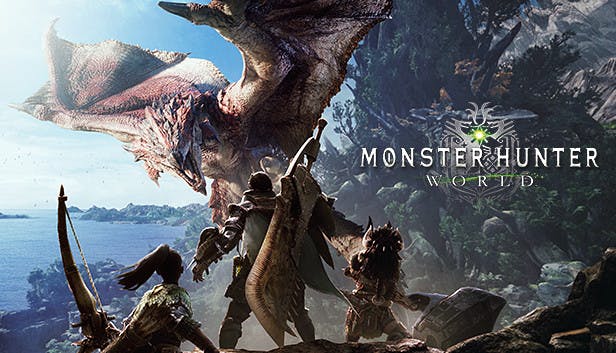
The result was an astounding success. Within three days of release, over 5 million copies were sold, including digital downloads (Hadrahan). At the Tokyo Game Show, which occurred between September 20-23 of 2018, Producer Ryozo Tsujimoto gave a surprising statistic with Monster Hunter world selling “…10,000,000 copies worldwide, the greatest amount of sales ever for a title in the series, with sales outside of Japan accounting for over 71%” (Frontline Gaming Japan).
The biggest milestone however was achieved when Monster Hunter World was suddenly announced as Capcom’s best-selling game ever. Capcom’s financial report for the 2018-2019 year revealed that “…it was confirmed the PS4, Xbox One, and PC RPG has shipped over 12 million units” (Dayus). The sales were made in comparison to other Capcom games stating “…horror remake Resident Evil 2 has shipped over 4 million units, while Devil May Cry 5 has shipped 2 million” (Dayus).
Despite Monster Hunter World’s success, there was a shift in the tone of the series. Monster Hunter was always considered at its core lighthearted, with the absurdity that comes with hunting monsters by using oversized weapons. The narrative of Monster Hunter World focused on a serious venture, with the analysis and study of the elder dragons. In previous titles, the player was just a random hunter that just happened to be around. Highlighting the difference in tone is the ending of Monster Hunter Generations and Monster Hunter World. Monster Hunter Generations’ ending involved a strange choreographed dance sequence as a celebration while Monster Hunter World’s ending has one ponder the future of the New World explored within the narrative.
Monster Hunter has a legacy that started in Japan. Monster Hunter Generations Ultimate was released prior to World as the last game in what fans call “old-school” Monster Hunter. It featured none of the quality of life changes from World, had a cartoon aesthetic, and was created as a celebration of the franchise’s long legacy.
The year 2019 marks the 15th anniversary of Monster Hunter and Capcom created a video calling out to the games that were released within those many years.
Monster Hunter World continues strong, with a new expansion about to be released September 9th, 2019 titled Iceborne. In Iceborne, the story will continue after the events of Monster Hunter World and send players to a snow-covered environ.
In its hybridization, Monster Hunter as a series has transitioned from a Western niche game to one that is mainstream. As a facet of cultural crosscurrents, Monster Hunter has received the recognition and success it has always deserved.
To conclude with the motto of the Monster Hunter Team, Happy Hunting!
Works Cited
Wright, Steven T. “Q&A;: ‘Monster Hunter World Leads Answer All the Big Questions.” glixel, 6 June 2017, https://web.archive.org/web/20170617003952/http://www.glixel.com/interviews/monster-hunter-world-leads-answer-all-the-big-questions-w488101
Cheetham, Dominic. “Dragons in English: The Great Change of the Late Nineteenth Century.” Children’s Literature in Education, vol. 45, no. 1, Mar. 2014, pp. 17–32. EBSCOhost, search.ebscohost.com/login.aspx?direct=true&db=eric&AN=EJ1036178&site=ehost-live.
Takeaki WADA. “History of Japanese Role-Playing Games.” Annals of Business Administrative Science, vol. 16, no. 3, May 2017, pp. 137–147. EBSCOhost, doi:10.7880/abas.0170228a.
Knezevic, Kevin. “Why Monster Hunter: World Leaves Behind Handhelds For Home Consoles and PC.” Gamespot, 20 June 2017, https://www.gamespot.com/articles/why-monster-hunter-world-leaves-behind-handhelds-f/1100-6450997/
Dring, Christopher. “Capcom: “We’d prefer a game that got a 9 and sold less, than a 6 but sold more.” gamesindustry.biz, 6 August 2018, https://www.gamesindustry.biz/articles/2018-08-03-capcom-taken-aback-by-resident-evil-2-reception
Handrahan, Matthew. “Monster Hunter World shipped 5m units in its launch weekend.” gamesindustry.biz, 29, January 2018, https://www.gamesindustry.biz/articles/2018-01-29-monster-hunter-world-shipped-5-million-units-in-a-weekend
Frontline Gaming Japan. “Monster Hunter: World – Global Game Business Summit Presentation (TGS2018).” Frontline Gaming Japan, 21, September 2018, https://www.frontlinejp.net/2018/09/21/monster-hunter-world-global-game-business-summit-presentation/
Dayus, Oscar. “Monster Hunter World is Now Capcom’s Best-Selling Game Ever.” Gamespot, 7, May 2019, https://www.gamespot.com/articles/monster-hunter-world-is-now-capcoms-best-selling-g/1100-6466697/


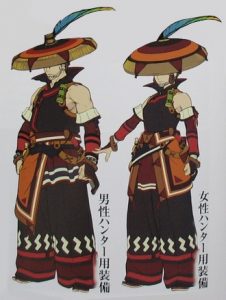
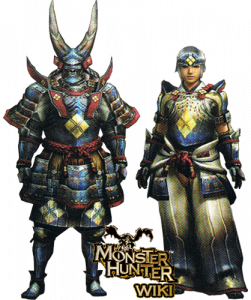
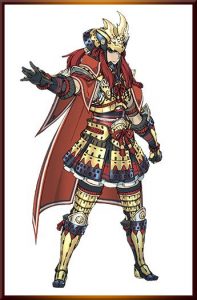
I like that you went into the character designs of character armors and mosters and their American influences… something I wanted to try to focus on in my paper but am having trouble with.
This is good, but I would try to use less media.